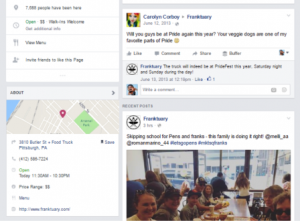
In 2013, Moz conducted an exhaustive Local Search Ranking Factors survey which, among other things, listed dozens of “foundational” ranking factors that might/should concern you as a local business owner hoping to draw maximum traffic to your website. Search engine optimization is an extremely complex business, and all those factors matter. You can’t just tweak a few things and expect fabulous display results. But you can’t just throw up your hands and give up, either.
So let’s look at results of the 2013 survey, and then take a look at highlights from 2014 to see how things changed after Google’s Pigeon update. (You may recall that this local search algorithm change, released last July, was designed to display local search results that are more “useful, relevant and accurate,” based on factors more closely aligned with traditional web search ranking signals.)
These were the top 10 local search ranking factors as of late 2013:
- Proper category associations
On your Google+ Local page (now folded into Google My Business), you need to choose a primary business category. You can’t invent your own, you have to select from Google’s list. Other local business directories require this, too, but their lists may differ so be sure to pick the most relevant category for each listing.
- Physical address in city of search
Google returns “packs” of local display results based on the city name appearing in the search itself – Denver dentists – or for the city where the search device is based. If you’re physically located in the city of search, you’ll do better. If you do business in nearby towns, you can try to rank better for them via organic search.
- Consistency of structured citations
These are formal mentions of your business in online local business directories. Inconsistencies that can hurt SEO include variations in your business name, street address or URL or an incorrect phone number or use of a toll-free or tracking number.
- Structured citation quality/authority
Make sure you’re listed in top-quality directories and indexes first, then worry about adding more later to expand your visibility (see #6 below).
- HTML NAP matches place page NAP
Google likes consistency, so be sure your name/address/phone number (NAP) on your Google My Business page matches the NAP on the linked web page. (Your NAP should be consistent everywhere it appears.)
- Structure citation quantity
The greater your competition in town, the more structured citations you need to rank well. You can build more by searching for additional directories and indexes relevant to your business.
- Website domain authority
This factor, which has multiple ingredients, indicates the overall likelihood your website will rank well against other websites in search results. SEO and human value factors are more closely aligned these days, so shoot for a user-friendly, well-optimized site and top-notch content.
- Individually owner-verified Local+ Page
This is now Google My Business; businesses should not only have a presence, business owners should formally verify that fact with Google.
- City and state in Places landing page title
Again, it’s now My Business; your city and state should show in the title tag of the web page linked to your GMB profile.
10. Proximity of address to centroid
Google decides how locally relevant you are based on the distance between your address and the “city center,” a moving target depending on your type of business. You have no control over this.
So what changed as of late 2014?
- Together, Link Signals (factors like inbound anchor text, linking domain authority and quantity) and On-Page Signals (factors like NAP presence, keywords in titles and domain authority) were weighted at more than 50% in determining localized organic search results.
- For pack results, Link Signals and On-Page Signals totaled only about 25%, whereas Review Signals (quantity, diversity and “velocity”) carried about that same influence and External Location Signals (things like NAP consistency and citation volume) were more important than each of these other three categories.
The 5 individual factors that gained most importance since Pigeon were:
- Website domain authority
- Proximity of address to the point of search (searcher-business distance)
- Quality/authority of inbound links to domain
- Quality/authority of inbound links to landing page URL
- Physical address in city of search
The 5 individual factors that lost the most importance since Pigeon were:
- Proximity of address to centroid
- Physical address in city of search
- Individually owner-verified My Business page
- Quantity of structured citations (IYPs, data aggregators)
- Proximity of address to centroid of other businesses in industry
If you have a lot of competition, these 10 factors will help you most:
- Website domain authority
- Consistency of structured citations
- Quality/authority of inbound links to domain
- Quality/authority of structured citations
- Proper category associations
- Quality/authority of inbound links to landing page URL
- City and state in landing page title
- Physical address in city of search
- Quantity of native Google Maps reviews (with text)
- Quality/authority of unstructured citations (newspaper articles, blog posts, etc.)
And these are the top 5 negative ranking factors – the mistakes that negate your other positive efforts to improve local SEO:
- Listing detected at false business location
- Incorrect business category
- Mis-match NAP – tracking phone numbers across data ecosystem
- Mis-match NAP – tracking phone number on My Business landing page
- Mis-match address on My Business landing page
In order to effectively build your local search rankings, you may want to start with an SEO audit.
One of the 2014 survey participants summed it all up best.
He noted that while local businesses must pay attention to key positive and negative ranking factors, “it is equally important for brands to be conscious of the user experience. If a brand appears in a pack of listings, the user is left to determine which of several listings they will interact with, all potentially offering the same types of products and services. Enticing imagery and robust listing content can increase the appeal of a brand and its listing to the user.”
Hear, hear.
(246)
Report Post






